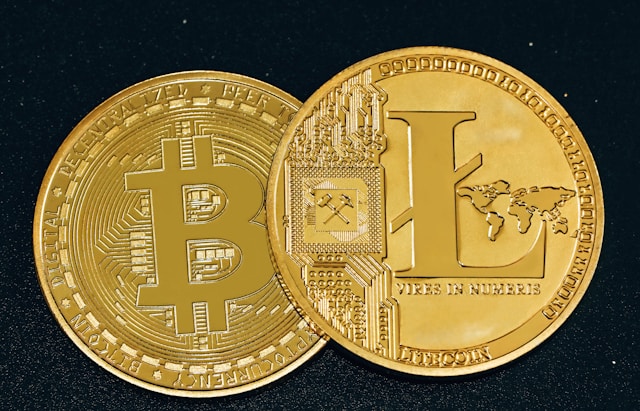Crypto Fundraising: ICO vs. IDO vs. IEO Overview
Blockchain proposes a new way of managing finances. As such, it’s no surprise that it would also bring new fundraising methods. For over a decade, crypto projects have relied on innovative ways of raising capital to fund their development. While now it’s easy to buy Bitcoin with PayPal, it’s harder to access newly minted tokens through traditional channels.
Following the launch of Ethereum, ICOs were the primary fundraising method. Over time, other alternatives, like IDO or IEO, have come up. Popular projects you probably know and own came from either of these.

How Each Fundraising Model Works
It’s important to note that each model came at a specific point in the crypto ecosystem and responded to particular needs and events in this market.
Initial Coin Offering
Initial Coin Offering operates similarly to IPOs in traditional stock markets. However, instead of trading on a stock exchange, it’s managed by the project itself. This way, it’s more decentralized and open to anyone.
Popular crypto projects—Filecoin, EOS, or Polkadot—raised their initial investments through ICOs. However, along with legitimate projects, ICOs’ unregulated nature gave way to numerous scams, like BitConnect. By early 2018, ICOs had lost popularity out of fear of scams. Despite that, there are still projects running ICOs to this day.
Initial DEX Offering
Initial DEX Offerings is a similar fundraising mechanism. The difference is that this model uses a third-party decentralized exchange to provide security and liquidity. A DEX is beneficial to the project because it automates the process of managing capital and investments.
Investors are more trustworthy when investing in an exchange rather than directly in the project’s wallet, like in ICOs. However, this model still has some risks. As a decentralized environment, there’s no control over who sets up an IDO. This means that scammers can also create fake projects, although it’s less likely. Other risks are related to smart contract vulnerabilities that could compromise the funds.
Initial Exchange Offering
Initial Exchange Offerings take place on centralized exchanges and are the most secure. The exchange manages the funds and verifies the legitimacy of the participating projects.
However, exchanges also have to comply with regulatory frameworks. They often require investors to create an account and go through KYC protocols to purchase the token, which limits the number of users who can access the token offering.
Exchanges also tend to charge fees for hosting and advertising the token sale.
The 5 Biggest Differences Between ICO, IDO, and IEO
To understand the differences between these fundraising methods, comparing some of their key aspects is useful.
1. Fundraising Platform
The most stark difference is the platform where the token sale takes place. ICOs are hosted and managed by the project’s team. They distribute the assets, market the offering, and manage investments.
IDOs are issued through a decentralized exchange, reducing the risks associated with ICOs and providing more liquidity. Meanwhile, IEOs are conducted using traditional centralized exchanges. This model has succeeded through platforms like the Binance Launchpad, which hosted Polygon and Axie Infinity.
2. Investor Accessibility
Accessibility differs depending on the type of fundraising used. Anyone can participate in an ICO, as there’s no single platform — investors deal directly with project representatives. IEOs have a higher barrier, requiring users to create an account and comply with KYC policies.
Centralized exchanges are a type of registered crypto business that must comply with the regulatory framework of each jurisdiction.
IDOs are more open because anyone can trade on a decentralized exchange. They also provide instant liquidity but often raise less money than other models.
3. Security & Trust
ICOs were the first open fundraising model in the crypto ecosystem. They waned in popularity due to security concerns, because plenty of scammers or illegitimate projects conducted ICOs.
IDOs and IEOs showed up as a way of solving these issues. In the first case, DEXes improve transparency by handling the sales through a smart contract. However, it’s still an open and decentralized model where anyone can conduct a token sale.
IEOs are the safest option because centralized exchanges only approve legitimate and solid projects.
4. Token Distribution
Since ICOs are managed by the same project representatives, they receive the funds and distribute the tokens. IDO and IEO models, on the other hand, use the corresponding exchanges to distribute the tokens. In the first case, the DEX allocates the token in liquidity pools for investors to trade. Centralized exchanges make them available for trading on their platform, offering liquidity and helping stabilize the price.
5. Costs & Fees
The cost for each model of fundraising varies. ICOs are the less expensive alternative, but issuers must dedicate more resources to marketing to attract investors. IDOs can help in attracting investors, but the project has to provide liquidity for the token to be available for trading.
IEOs deal with marketing and liquidity issues but charge fees and commissions to the project to cover the costs of launching the token sale. Since most fees are paid using cryptocurrencies, the Bitcoin calculator on Paybis can be useful to know exactly how much you have to pay in each case.
Which Fundraising Model Is Best for Crypto Startups in 2025?
Each model has worthy advantages, as well as a set of drawbacks. If you’re looking to fund your crypto startup, but you’re not sure what model works for you, this guide can be a starting point for deciding what suits you best.
The decision depends on the size and roles of your team — whether you prefer to invest in marketing or liquidity or rather pay a centralized exchange to deal with those issues.




